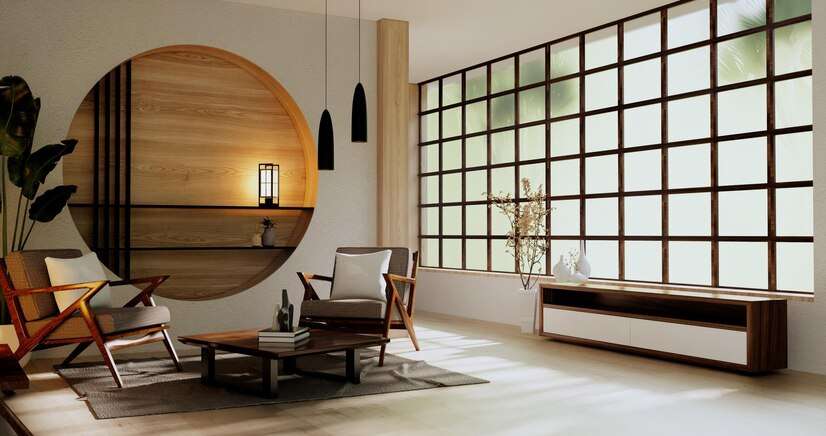Ikigai is the perfect rendition of minimalistic design philosophy of Japan. It skilfully combines elegance with minimalist design for a more meaningful and fulfilling space. When you embrace the philosophy of Ikigai in your home, it presents you with some of the most interesting design concepts to experiment around.
At its core Ikigai refers to doing what you love, and prioritising sustainability and harmony while seeking out happiness from tiny details. When you choose an Okanagan home for sale, you can modify and decorate it while using this design philosophy as your guide.
Ideas for interior design inspired by Ikigai philosophy:
1. Maximize natural light
When it comes to classic Japanese architecture, some things stand out while maintaining subtlety. Light is one such element that defines Japanese aesthetics. It is ever-present and facilitates everything else in the room without ever taking centre stage. For instance, the screened window architecture that’s common across classical Japanese buildings diffuses natural light across one or multiple rooms.
Rooms are constructed with screened partitions that allow light to flow freely in every direction during the day. While you don’t need to mimic the bamboo walls and thin wooden doors, large screened windows that point towards the sun can be integrated seamlessly into Okanagan Lake houses for sale.
2. Treat your room as a canvas
Ikigai encourages the introduction of things you’re passionate about in a space. It’s like painting a beautiful picture with your favourite colours. However, if your room is dark or has bright colours that steal attention from those elements, the concept fails to achieve its purpose. Instead, turn rooms into a canvas with more white elements.
Okanagan custom home builders don’t recommend you simply paint walls white. Instead, choose a light neutral tone for your walls with a unique texture or finish. Add large blank white frames on the wall or hang pendant lights that reflect white light from the wall. You can also be elaborate and turn one wall into floor-to-ceiling windows. When your room has more white elements, the house plants, accents, bronze furniture, ceramic showpieces and warm tones on your wooden furniture get to pop and truly shine.
3. Add more sustainable and rustic elements
Kintsugi is the Japanese art that mends broken pottery with gold. While symbolizing a metaphor for accepting your flaws, it just goes to show how sustainability is ingrained into the Japanese psyche. Ikigai also focuses on minimising waste and that means you don’t need to throw away the couch with the stained upholstery.
Instead, try refinishing it or bleaching the fabric to create an interesting texture. You can also look into old antiques to add to your home. Home builders in Okanagan often source different products to recreate a rustic and old look in a new home. The trick is to use a piece of furniture as a focal point and design around it.
4. Prefer user-friendliness while picking furniture
Utility never takes a runner-up position to anything in an Ikigiai-inspired space. Furniture pieces should be user-friendly and frequently used instead of being another piece of decor. They should inspire you to do things. If you have furniture pieces in your home office, they should inspire you to be more productive.
5. Textured possibilities
The human skin is the largest sensory organ and is meant to experience different types of textures. That’s why Japanese design philosophies often incorporate various textures in a room. Smooth paper screen doors, striped tatami mats, bamboo windows, ceramic pots and silk fabrics make up for a refreshing sensory and visual experience.
When you buy a home for sale in the Okanagan Valley, you can add different textures to your room for a similar aesthetic and feel. For instance, a fluffy rug paired with a quilted lounge and soft pillows works well in any modern setting. To add more textures, you can use potted plants, metal floor lamps, stone sculptures and other such elements as long as they achieve sophistication without breaking simplicity. Striking the right balance is the tricky part here.
Japanese interior design is widely regarded across the world as the next step to minimalism. Their homes focus on amplifying natural beauty while maintaining precision and simplicity. Follow these tips to assimilate those design concepts into your new home and create a sanctuary that provides relief and a peaceful refuge from external chaos.

As the editor of the blog, She curate insightful content that sparks curiosity and fosters learning. With a passion for storytelling and a keen eye for detail, she strive to bring diverse perspectives and engaging narratives to readers, ensuring every piece informs, inspires, and enriches.










